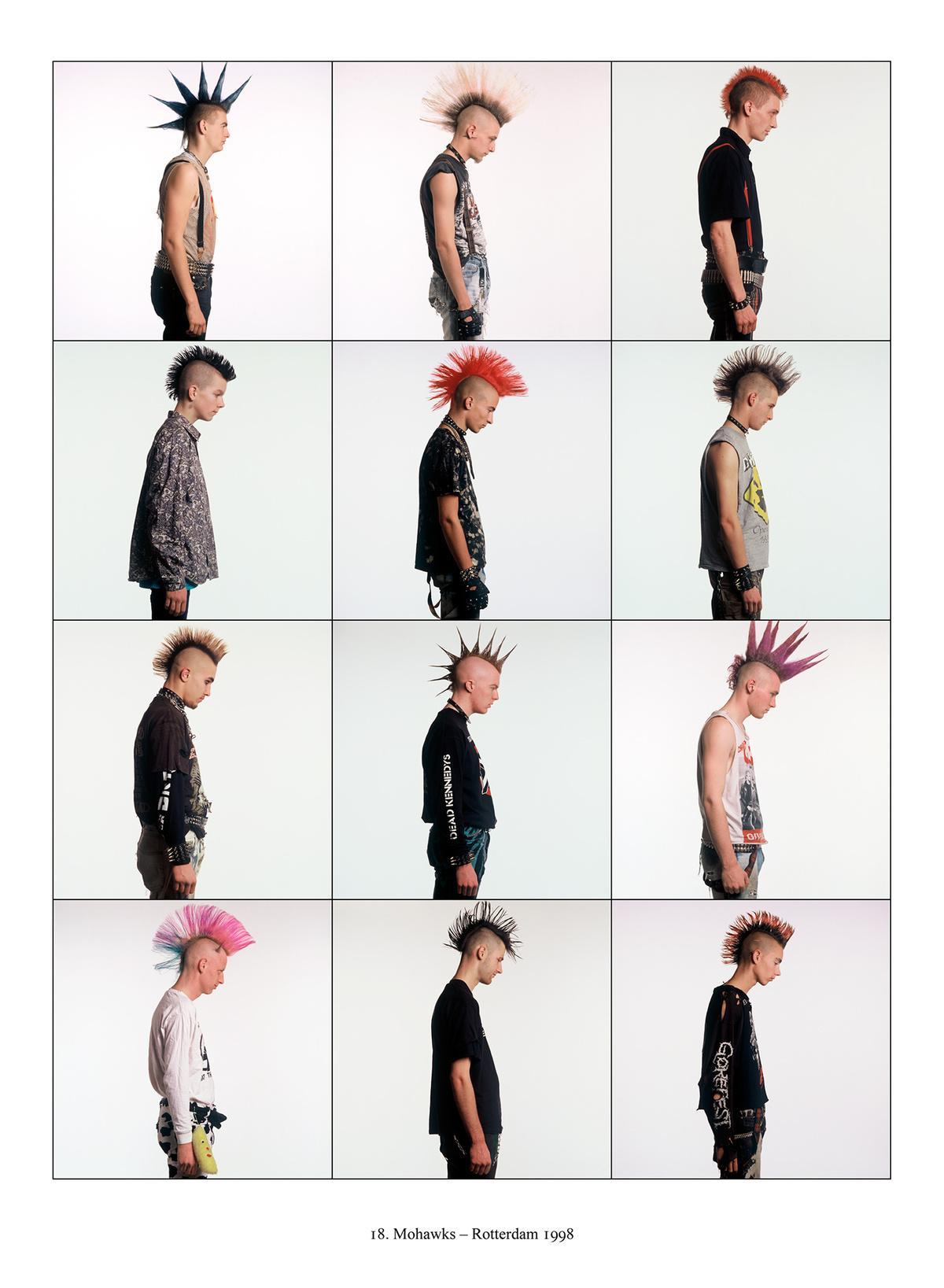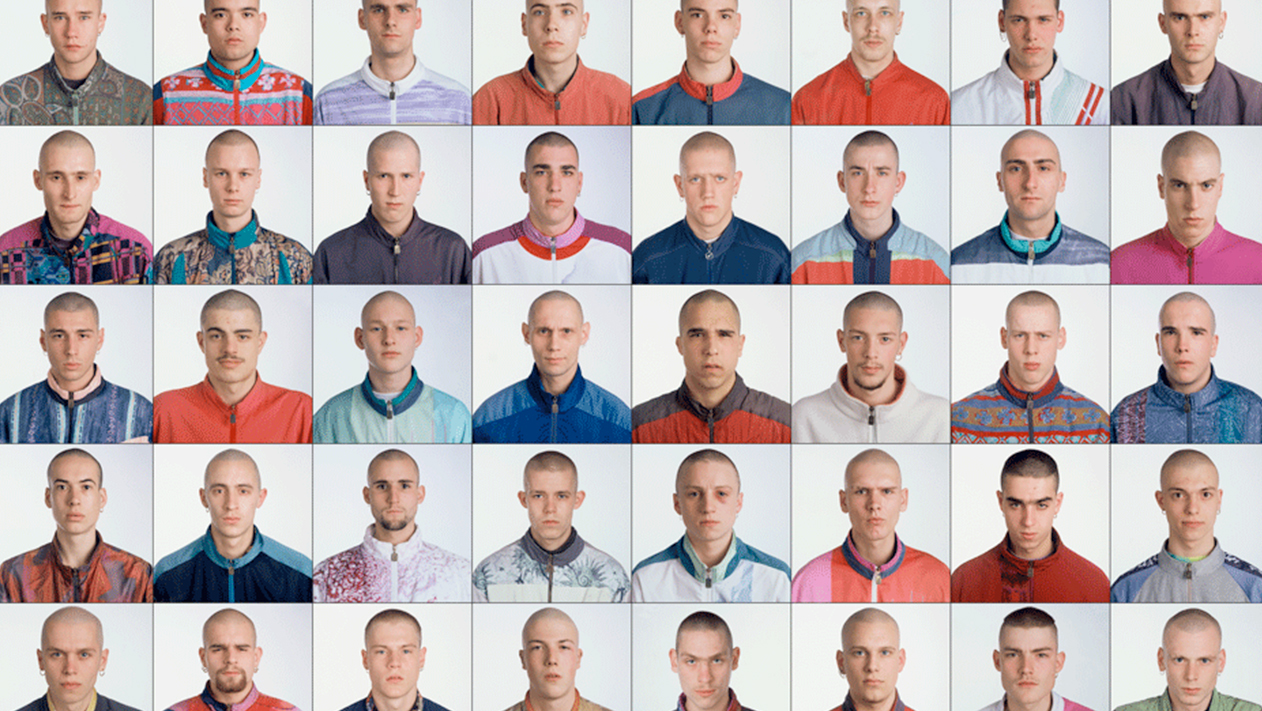The latest Vetements collection, shown in Paris at the end of January, predictably generated a lot of discussion. There are few brands who so easily generate comment and controversy. This season Gvasalia used Exactitudes — “a photographic argument against uniqueness” — by Ari Versluis and Ellie Uyttenbroek, a catalogue of the similarities in dress in particular social groups over the last 15 years. The result was 36 fashion stereotypes walking down the runway, from rich bitch in furs to office worker, punk rocker, and football hooligan. The word that was used a lot to describe the show was ‘normal’ — “just like normal people on the street,” “just a take on normal clothes.” But in the midst of the political crises of the last few years, what does “normal,” particularly in menswear, really mean?
You probably remember “normcore”, a term that coined in 2013 by trend forecasting agency K-Hole. There was a lot of hype in the press, but in practice it was largely about wearing khaki, bucket hats, and sports socks with orthopedic sandals. Dressing like Steve Jobs, basically. As quickly as it was everywhere it seemed to disappear, but it didn’t quite go away — it dissolved into the fabric of contemporary fashion. In 2017, “normal” rises again.
Vetements‘ fall/winter 17 show had the brand’s staple oversized bomber jackets and hoodies, but there was also a lot of conventionally formal and everyday garments: trousers, suit jackets, coats deliberately awkward and slouchy, as if stolen from a real-life office clerk on a commuter train. Gvasalia’s second menswear show at Balenciaga also tapped into the office dress code. He presented high fashion’s take on normal formal wear: suit jackets worn over naked chests, trousers too skinny or too voluminous, chinos (deliberately perhaps) completely ill fitting, orthopedic sneakers reinvented as a luxury item. Even the most “normal” combination of a flannel shirt and a sweatshirt looked stiff, strange and out of proportion. Then, of course, there was Balenciaga branding styled to resemble Bernie Sanders’ campaign logo.

Sanders’s logo underwent a lot of re-imaginings during his campaign — from being remade into a black metal style band merch, to an unofficial bootleg of an iconic Black Flag T-shirt. Why were these logo games so hilarious? Because Sanders, despite being the most progressive politician, was hopelessly uncool. But then, he was so uncool he was cool again, which is very much in line with normcore’s ethos.
Gvasalia was not the only designer who turned to conventions of menswear this season to play socio-political games.At Gosha Rubchinskiy’s show in the Russian enclave of Kaliningrad, the first look was as far from his usual skater boy attire as you could imagine: blue shirt, knitted tie, and black trousers. Dressy double breasted suits followed, alongside allusions to uniform, whether it was of the suited and booted kind or drawing references to football casuals. Some looks resembled garments worn by police or military, which in the age of growing armed conflict anxiety and rising nationalism was slightly unsettling. The boys’s honest monologues about their dreams and aspirations playing in the background were a much-needed antidote to these thoughts. Like Vetements, Gosha was riffing on the fashion codes of different tribes of people.
Subverting the codes of the uniform was the aim of London-based Chinese designer Xander Zhou, who also looked at the figure of the working man. He used formal shirts and knitted waistcoats, although they were too tight and cropped, sometimes exposing a bit of stomach. It was definitely a statement, there’s hardly anything less masculine than a crop top. A few looks in the collection also referenced the masculine cliche of manual labor — work trousers, long sturdy gloves — although these guys wouldn’t be out of place at a queer fetish rave, which lent the whole collection a subversive sexuality.
Subversive sexuality was also one of the themes Martine Rose explored on her return to the catwalk schedule after a few seasons off. Her fall/winter 17 show, staged in Seven Sisters Indoor Market, debuted her twisted take on the concept of luxurious men’s wardrobe. There were statement ties, shiny silky fabrics, practical coats, and tailoring that unexpectedly sent the whole thing into a gender fluid direction. London-based duo Cottweiler already did an homage to zipped up hotel personnel in a collection that played on the contrast between the practicality of sportswear and the affluent tactility of silky flowing tops; mixing outdated Italian-style machismo and daring sensuality.

Why this spate of sexually ambiguous takes on the traditional menswear codes? Well, it would seem that today one of the main roles of the menswear designer is challenging the conventions of masculinity and the idea of “normal.” What we perceive as “normal” is very often a heterosexual white conservative idea of what “normal” should be. What makes a sweater or a jacket look normal? The most likely the fact that it’s not too long, not too short, and not too bright to be worn by a straight guy who is part of the establishment. “Normal” in menswear is a very political term.
Today we want to believe that the time of the patriarchy is coming to an end, that it’s crumbling all over the world. But really, militarism, nationalism, and political machismo are on the rise. We look inside the places where politics is made and we see a bunch of old white men deciding on a future that doesn’t belong to them. Of course they are all dressed in suits, the most boring, “normal” suits imaginable. We see Donald Trump’s appalling red tie all over the media, and it almost becomes a symbol of worldwide terror and oppression.
It is symbolic that designers are turning to the traditional menswear codes at this moment in history. It could look like a conformist move, but the devil is in the detail. Yes, if you’re designing Balenciaga menswear, you’ve got to appeal to grown ups with money but if you zoom in on one picture from the most recent collection you’d see that the under a thick coat the guy is wearing burgundy-colored stockings. It’s the same with the flashes of skin at Xander Zhou, the use of tender lilac color at Cottweiler, or the transparent plastic pocket on a Gosha Rubchinskiy blue shirt — it’s really a complete subversion of traditional masculine look.
If a crowd at a Parisian gay club suddenly starts dressing up in suits, what’s happened to the norm then? Taking away the “normal” look from the ones who own it means taking away at least a little bit of their power.
Read: The gender politics at the heart of this season’s men’s shows.
Credits
Text Anastasiia Fedorova
Images Ari Versluis and Ellie Uyttenbroek
